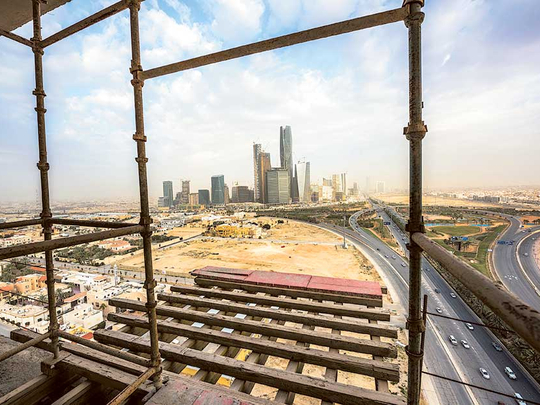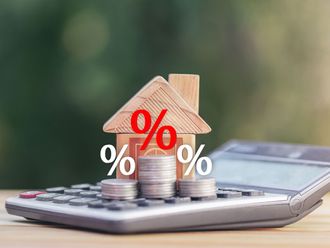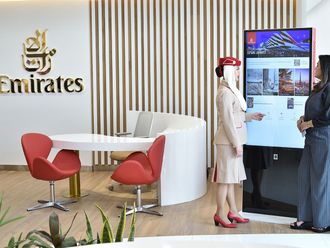
Dubai: Saudi banks faced with shrinking liquidity, rising cost of funds and pressure on profitability are expected to face deterioration in asset quality, according to banking sector analysts.
Rising challenges in the Saudi construction sector is expected to result in a spike in non-performing loans (NPLs) and higher provisioning costs for the country’s banks, according to rating agencies.
“The Saudi construction sector has been negatively affected over the last two years by slowing economic activity and fiscal consolidation measures, stemming from a lower oil prices environment. We expect the pressures to continue as the Saudi government aims to reduce its large fiscal deficit,” said Olivier Panis, a Vice President — Senior Credit Officer, at Moody’s.
Saudi banks’ exposure to the building and construction sector increased by 19.7 per cent year-on-year as of June 2016. This is well above the 8.9 per cent increase in total bank credit over the same period and has contributed to a material increase in the sector’s indebtedness.
NPLs associated to the building and construction sector is already the highest when compared to other sectors, at 3.1 per cent of gross loans as of year-end 2015 (up from 2.8 per cent as of year-end 2015) versus a total reported NPL ratio of 1.2 per cent.
“The building and construction sector will likely contribute materially to the increase NPLs at Saudi banks. We expect NPLs to rise to around 2.5 per cent of gross loans in 2017, from around 1.5 per cent estimated as of June 2016,” said Panis.
The operating environment in Saudi Arabia has a high influence on many of the banks. This environment has become increasingly challenging because of the fall in oil prices and the subsequent policy response from the Saudi authorities, including significant fiscal tightening.
Liquidity has tightened significantly across the sector since end of the first half of 2015. Banks have historically relied on large public-sector deposits, some of which have been withdrawn to bridge falling state revenues. This has reduced liquidity buffers, with Liquidity Coverage Ratios (LCRs) dropping significantly and we expect continued fiscal tightening to put further pressure on liquidity.
Banks have been managing the liquidity crunch well, according to Fitch. With the economy so reliant on government spending, fiscal tightening is having an effect on credit demand, with loan growth in 2015 down on previous years. Anticipated higher loan impairment charges (LICs) will also affect banks’ bottom lines.
Although the asset-quality metrics remain robust and among the strongest globally, restructured loans are increasing, particularly in the contracting sector. “We expect asset-quality metrics to worsen over the medium term, although most banks have good earnings and capital buffers with which to mitigate this,” said Andrew Parkinson, an analyst with Fitch.
The building and construction sector in Saudi Arabia is already the main contributor to NPL formation at Saudi banks over the past five years. The trend is expected to continue for the coming quarters according to Moody’s.
“This (trend in NPL formation) is indicated by the increasing proportion of NPLs in this segment, accounting for SAR4.1 billion or 27 per cent of system NPLs as of year-end-2015, up from SAR1.9 billion or 8 per cent of system NPLs as of year-end 2010, and a number of leading indicators of asset-risk trends monitored by Moody’s point to rising pressures that will stem from the construction sector in next 18 months,” said Panis.
While the Saudi banks are expected to face increased problem loans and higher provisioning costs over the next 12 months, analysts say the magnitude of the asset quality deterioration to be within the banks’ profit margins. In addition, the banks’ high capital buffers can absorb a material stress from downside scenarios in the building and construction sector.
Loan-loss provisions are strong, representing around 178 per cent of reported
NPLs. Capital adequacy ratio and Tier 1 ratio stood at 18.3 per cent and 16.4 per cent, respectively, as of June 2016. Moody’s said the reported coverage ratio would still remain strong at around 150 per cent if the NPL ratio in the building and construction sector were to increase to 4.5 per cent from 3.1 per cent as of year-end 2015 representing SAR1.9 billion in additional NPLs.












